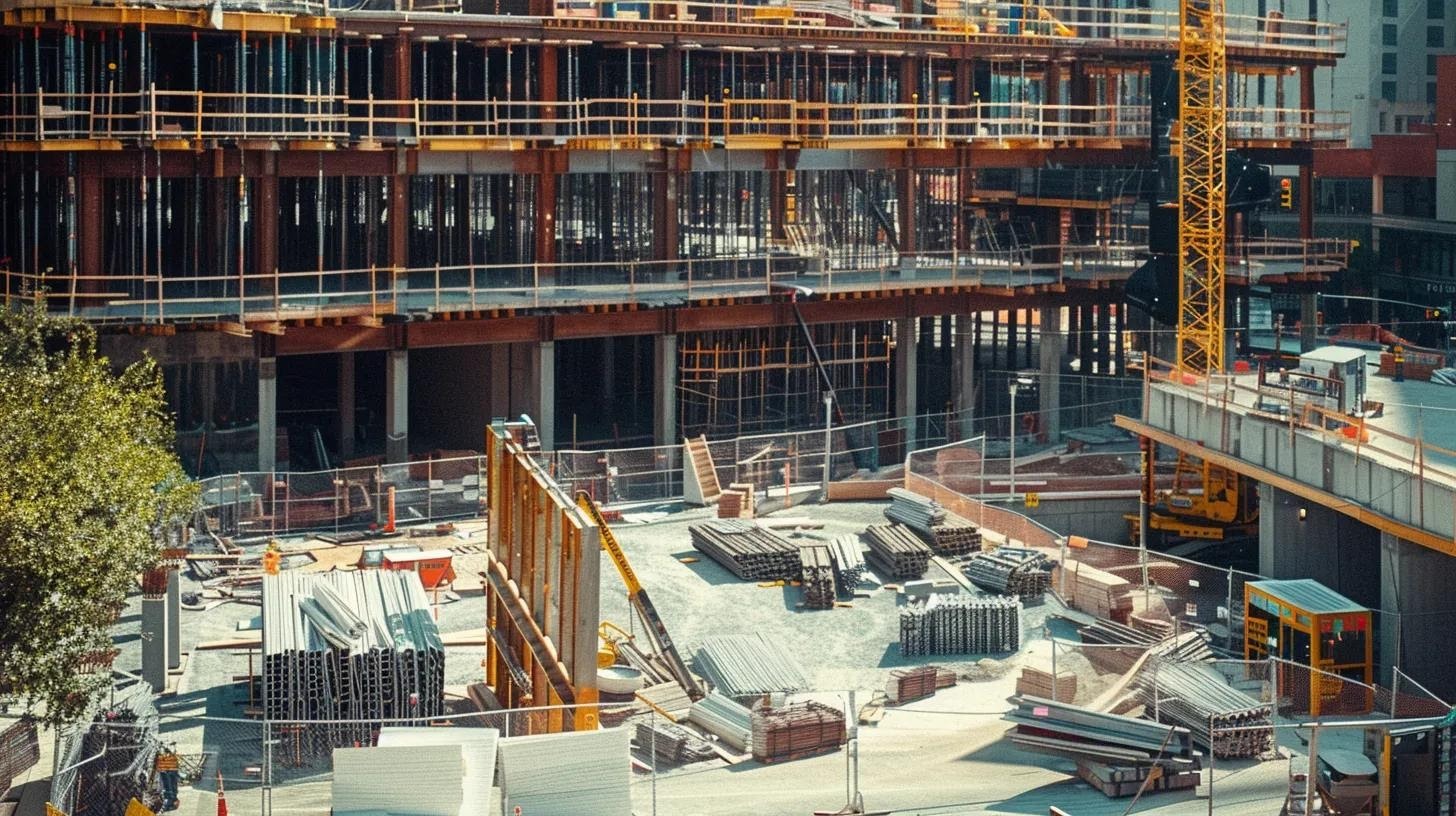Hurricane Resistance Standards in Building Codes for Roofing

Key Takeaways
- Building codes for hurricane roofing protect structures from extreme wind forces and debris impact.
- Essential standards include wind uplift resistance, roof sheathing quality, fastener specifications, and impact resistance.
- Mandates from the International Residential Code (IRC), International Building Code (IBC), and ASCE 7 guide material selection and installation.
- Ongoing inspections, certification, and detailed documentation are vital for sustained compliance and safety.
Understanding Building Codes for Hurricane Roofing

Building codes for hurricane roofing ensure that roofs can withstand severe weather events. They reduce property damage and safeguard human life by establishing reliable standards to address wind forces, impact resistance, and overall durability. These codes enable local and national authorities to enforce construction practices that substantially lower the risk of roof failure during high winds and flying debris.
The Purpose of Hurricane Roofing Regulations
hurricane roofing regulations are designed to minimize structural damage and protect occupants during extreme weather. They set minimum performance standards that require roofs to handle sudden pressure changes, resist wind uplift, and endure high-velocity impacts. In doing so, these codes reduce repair costs, lower insurance claims, and promote long-term resilience.
How Building Codes Address Hurricane Wind Forces on Roofs
Building codes incorporate quantitative standards—such as specific wind speed ratings—to ensure roofs are designed with adequate wind uplift resistance and secure attachment of materials. This approach uses precise calculations and simulated hurricane conditions to test roof durability, thereby enhancing overall structural resilience.
Key Organizations Setting Hurricane Resistance Standards
Leading bodies such as the International Code Council (ICC) and the American Society of Civil Engineers (ASCE) develop and update these codes. They combine rigorous testing, scientific research, and industry feedback to create comprehensive standards applicable to new construction and retrofitting. Their standards serve as benchmarks for local jurisdictions during hurricane seasons.
Navigating Local Amendments to Building Codes for Hurricane Roofing
Local jurisdictions may adjust national building codes to reflect specific environmental conditions, such as local wind speeds and regional debris profiles. Contractors and homeowners must understand these amendments to ensure compliance, avoid penalties, and manage increased insurance premiums. Consulting local building departments and certified inspectors is recommended for navigating these regional modifications.
Consequences of Non-Compliance With Hurricane Roofing Standards
Failure to adhere to hurricane roofing standards can result in roof damage during storms, hazardous living conditions, and costly repairs. Non-compliant roofs may also lead to higher insurance premiums, reduced property values, and legal issues. Enforcement agencies continually monitor construction practices to maintain public safety.
Core Components of Hurricane Resistance Standards in Roofing Codes
Hurricane roofing regulations include several technical requirements that ensure a roof’s capacity to withstand extreme weather. These components range from proper fasteners to high-quality materials, all designed to improve durability and performance.
Wind Uplift Resistance Requirements in Building Codes
Building codes mandate that roofs must be securely attached to the underlying structure to prevent detachment during high winds. This is measured through pressure resistance tests, including wind tunnel simulations. Meeting these requirements is key to ensuring that roofing systems remain safely fixed during severe wind events.
Requirements for Roof Sheathing and Deck Attachment
High-quality roof sheathing and proper deck attachment are essential for distributing wind loads. Codes specify materials such as plywood or oriented strand board (OSB) with defined thickness standards, as well as fastening methods that use nails and screws at calculated intervals. These measures help maintain roof integrity and reduce the risk of shingle loss or deck failure under high wind pressures.
Stipulations for Roofing Underlayment in Hurricane Zones
Underlayment acts as a secondary barrier against water and debris. In hurricane-prone regions, codes require underlayment with enhanced tensile strength and tear resistance. Manufacturers must provide evidence of moisture barrier properties and overall durability, ensuring that this critical layer sustains protection even when the outer roofing fails.
Fastener Specifications Within Hurricane Roofing Codes
The effectiveness of a roof often depends on its fasteners. Building codes detail requirements for fastener size, material, spacing, and corrosion resistance. For example, corrosion-resistant stainless steel screws are preferred in coastal areas to prevent degradation from saltwater exposure. These specifications ensure that the applied fasteners will maintain secure attachment under high wind loads.
Impact Resistance Criteria for Roofing Materials
Roofing materials must be certified to survive impacts from airborne debris. Standardized tests, such as those performed by Underwriters Laboratories (UL), evaluate a material’s ability to withstand hit forces. Ratings provided by manufacturers indicate how likely shingles or tiles are to crack or break, ensuring that roofs maintain their protective function during a hurricane.
Specific Building Code Mandates for Hurricane-Prone Regions

Certain regions with high hurricane risks follow specialized building code mandates that go beyond standard construction requirements. These enhanced provisions include advanced testing procedures and localized adjustments that respond to unique environmental stressors.
Examining the International Residential Code for Hurricane Roofing
The IRC lays the groundwork for residential construction in hurricane-prone areas. It includes detailed provisions regarding roof covering, underlayment, fastener spacing, and material durability. Higher performance thresholds are set for high-risk regions, promoting consistency and resilience across jurisdictions.
Reviewing the International Building Code's Impact on Roofs
The IBC builds on the IRC guidelines for commercial and multi-family structures. It incorporates advanced calculations for wind loads and seismic activity to ensure that larger or more complex roofs can withstand extreme forces. This code provides detailed specifications for roof deck construction and installation methods that support consistent roof performance.
Understanding ASCE 7 Standards for Wind Load Calculations on Roofs
ASCE 7 offers the scientific framework for wind load calculations by using geographic and probabilistic data to determine expected wind pressures. Engineers rely on ASCE 7 formulas to size and design roof components that can resist dynamic wind forces, directly influencing the requirements found within both the IRC and IBC.
State-Specific Hurricane Resistance Building Codes for Roofing
Many coastal states customize national standards to reflect local risks, such as higher wind speeds or specific debris profiles. These state-specific mandates might require improved fastener corrosion resistance, upgraded underlayment, or adjusted roof pitch. Compliance often involves additional inspections and certifications to ensure these tailored requirements are met.
High-Velocity Hurricane Zone (HVHZ) Roofing Requirements
HVHZ regions face the most extreme wind conditions and, therefore, enforce the strictest roofing performance criteria. In these areas, every roofing component—from underlayment to fasteners—must meet elevated standards to endure wind speeds often exceeding 140 mph. Compliance is verified through mandatory testing and certification to prevent catastrophic roof failure.
Selecting Compliant Materials for Hurricane Resistant Roofing
Choosing the right materials is crucial for meeting hurricane resistance standards. Contractors and homeowners should assess approved roofing options that have been thoroughly tested for wind and impact resistance.
Approved Roofing Materials Under Current Building Codes
Materials such as high-performance asphalt shingles, metal roofing systems, clay tiles, and synthetic composites are commonly approved for hurricane regions. These products are evaluated for their durability and compatibility with fastener systems, and manufacturers provide certification data to confirm compliance with both state-specific and national codes.
Comparing Asphalt Shingles for Hurricane Resistance
Certain asphalt shingles are engineered for better adhesion and wind uplift resistance. Architectural or laminated shingles, with their multilayer construction and interlocking design, typically offer improved performance compared to traditional three-tab shingles. Many of these products are rated for wind speeds up to 143 mph, giving consumers a measurable standard to rely on.
Metal Roofing Systems and Hurricane Code Compliance
Metal roofs are highly valued for their durability and resistance to wind forces. They naturally disperse wind and are less prone to cracking compared to other materials. Standing seam and corrugated panels, in particular, have demonstrated strong performance in tests for both wind uplift and impact resistance. Paired with specialized fasteners and underlayments, metal roofing systems offer lasting protection in coastal hurricane zones.
Tile Roofing Standards in Hurricane Building Codes
Tile roofs, including those made from clay or concrete, offer excellent longevity and impact resistance when properly installed. However, they require additional fasteners and enhanced underlayment to secure them against high wind forces. Codes ensure that tile roofs are tested for both uplift resistance and debris impact, confirming their integrity during hurricanes.
Low-Slope and Flat Roof Considerations in Hurricane Regions
Low-slope and flat roofs demand special design strategies to manage water pooling and wind forces. These roofs often use modified bitumen or single-ply membranes that provide superior waterproofing. Additional fastening systems and improved underlayment are required to prevent uplift and blow-offs, ensuring that even non-traditional roof designs remain secure during severe storms.
Testing and Certification for Hurricane Roofing Code Adherence

Robust testing and certification are essential to verify that roofing materials and installations comply with hurricane-resistant building codes.
Recognized Testing Protocols for Hurricane Resistant Roofing
Testing protocols include wind tunnel simulations, mechanical fastener tests, and impact resistance assessments by independent laboratories. These evaluations simulate real hurricane conditions to ensure that every component of the roofing system performs cohesively under extreme stress.
The Significance of Product Approval for Building Codes
A valid certification mark or label on roofing systems indicates that the product has passed rigorous testing. This independent verification reassures homeowners and contractors that the roofing material meets the necessary performance standards, thus reducing liability and enhancing overall safety.
Identifying Certified Hurricane Resistant Roofing Products
Homeowners and builders should look for certifications from recognized agencies like UL and the American Architectural Manufacturers Association (AAMA). Such certifications, along with detailed product literature and test results, confirm that the roofing products have undergone the thorough evaluations required by the codes.
Laboratory Testing Versus Real-World Performance
While standardized laboratory tests provide quantifiable performance metrics, actual on-site conditions may differ. Therefore, field inspections are essential to verify that installation practices and environmental factors do not compromise the roof’s effectiveness during a hurricane.
Role of Third-Party Verification in Hurricane Roofing Standards
Independent third-party inspections further ensure that roofing installations comply with building codes. Regular audits and updated certification processes help maintain consistent quality and reliability in hurricane-resistant roofing systems.
Maintaining Compliance With Hurricane Resistance Roofing Standards
Sustaining compliance with hurricane roofing standards involves continuous inspections, proper documentation, and staying current with code updates.
The Inspection Process for Hurricane Roofing Installations
Periodic inspections by certified professionals ensure that every component—from fasteners to underlayment—remains in good condition. These examinations help detect potential weaknesses early, ensuring timely maintenance and providing valuable documentation for insurance or legal purposes.
Documenting Adherence to Building Codes for Hurricane Roofing
Maintaining comprehensive records, including product certifications, installation details, and inspection reports, is crucial for demonstrating compliance. Such documentation is essential during property assessments and insurance reviews and can help resolve disputes if they arise.
Updates and Revisions to Hurricane Resistance Standards
Building codes are periodically revised to incorporate new research and technological advancements. Contractors and homeowners are encouraged to stay informed through government and industry publications, which helps them adapt practices and materials as standards evolve.
Resources for Staying Informed on Roofing Code Changes
Professionals should use resources such as industry journals, trade associations, and government websites. Continuous professional development through courses and webinars also helps ensure up-to-date knowledge on changing roofing codes.
Future Trends in Building Codes for Hurricane Roofing Protection
Emerging trends include the integration of real-time monitoring systems, enhanced fire and wind resistance materials, and eco-friendly construction practices. As these innovations are adopted, building codes will continue to evolve, offering even greater protection while promoting energy efficiency and sustainability.
Frequently Asked Questions
Q: How do building codes ensure hurricane resistance in roofing? A: Building codes require specific tests and certifications, such as wind uplift resistance and impact tests, to ensure roofing systems meet stringent standards for high-wind and debris impact.
Q: What materials are most compliant with hurricane roofing codes? A: Approved materials include high-performance asphalt shingles, metal roofing systems, and tile roofs, all tested for wind uplift, impact resistance, and proper fastener compatibility.
Q: How can homeowners verify compliance with local hurricane roofing codes? A: Homeowners should request third-party inspection reports and check for certifications from recognized agencies, such as UL, to ensure all roofing components meet code requirements.
Q: What is the role of ASCE 7 in hurricane roofing? A: ASCE 7 provides essential guidelines for wind load calculations and structural design, forming the basis for many roofing standards in both residential and commercial buildings.
Q: Why are regular inspections important for maintaining hurricane roofing standards? A: Regular inspections help detect damage early, ensuring roofing materials maintain their performance and reducing risks during subsequent hurricanes.
Final Thoughts
Hurricane roofing standards in building codes are critical to protecting properties from severe weather. By mandating rigorous specifications for materials, fasteners, and installation practices, these codes ensure that roofs remain resilient under extreme storm conditions. Both homeowners and contractors benefit from the rigorous testing protocols, independent certifications, and ongoing inspections that keep roofing systems safe and compliant. Staying informed about evolving standards not only protects roofs but also enhances long-term property value and community resilience.



